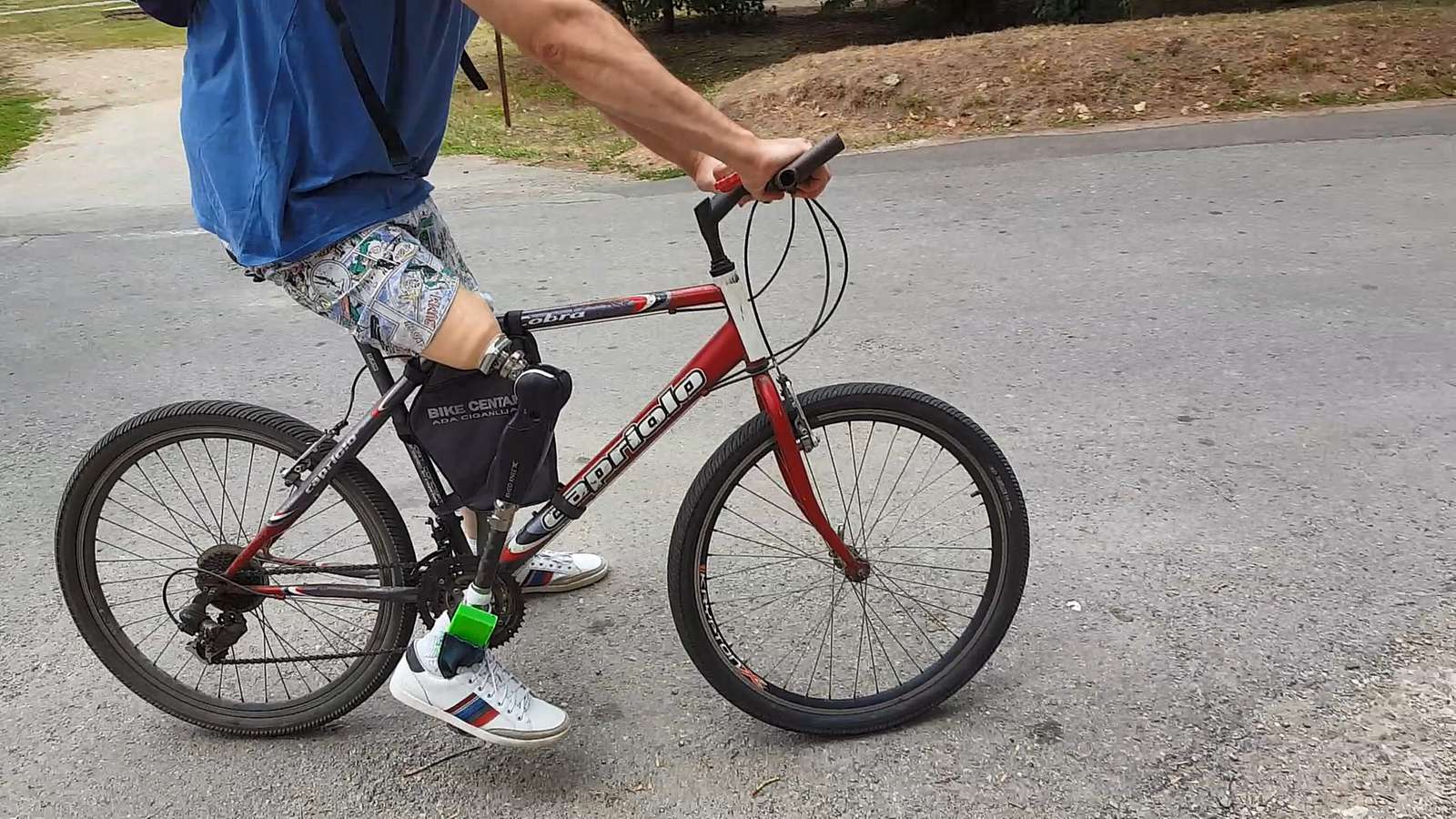A prosthetic leg that can sense touch makes it easier for amputees to walk

The prosthesis tries to replicate the nervous system’s feedback loop.
The issue: People who walk on both legs rely on constant feedback between their nerves and their brain to get around. But people using a prosthesis don’t have this brain-foot loop, which can make harder to walk confidently. A new bionic prosthesis, developed by researchers from ETH Zurich and the Universities of Belgrade and Freiburg, and described in Nature Medicine today, tries to make it easier for amputees to get around by letting them “feel” surfaces again.
How the system works: The researchers implanted four tiny electrodes into the residual nerves in the amputees’ thighs. The team developed algorithms to translate the data coming from sensors in the “knee” of the prosthesis and sole of the shoe into electrical signals. The brain translated these signals, helping the user adjust their gait accordingly.
The results: The volunteers underwent a series of tests over three months, alternating trials with and without the neurofeedback. They found that walking with neurofeedback was much less physically and mentally demanding. There have been several tests of prosthetic sensory feedback systems in both humans and rats, but this is the first to demonstrate this sort of feedback restoration in above-knee amputees in real time.
Pain no more: The researchers found that new prosthesis reduced phantom limb pain, an unpleasant and currently untreatable sensation at the site of the amputation that most amputees experience. Both volunteers experienced it, yet one said it had been eliminated by the end of the trial, while the other reported 80% less pain by the end of the trial period.
Next steps: The volunteers were tested for three months, but this study is still just a proof of concept. It needs to be tested for longer on many more amputees. If that is successful, the hope is to make it a permanent implant for patients.
Sign up here for our daily newsletter The Download to get your dose of the latest must-read news from the world of emerging tech.
Deep Dive
Biotechnology and health
How scientists traced a mysterious covid case back to six toilets
When wastewater surveillance turns into a hunt for a single infected individual, the ethics get tricky.
An AI-driven “factory of drugs” claims to have hit a big milestone
Insilico is part of a wave of companies betting on AI as the "next amazing revolution" in biology
The quest to legitimize longevity medicine
Longevity clinics offer a mix of services that largely cater to the wealthy. Now there’s a push to establish their work as a credible medical field.
There is a new most expensive drug in the world. Price tag: $4.25 million
But will the latest gene therapy suffer the curse of the costliest drug?
Stay connected
Get the latest updates from
MIT Technology Review
Discover special offers, top stories, upcoming events, and more.